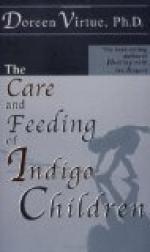Is milk which has been sterilized always a safe food?
No; for the reason that the milk may be so old, so dirty, and so contaminated before sterilizing that it may be still unfit for food, though it contains no living germs.
Is cow’s milk rendered more digestible by being heated in this way?
Sterilizing milk does not improve its digestibility but rather the contrary. Sterilized milk should be modified for infant feeding in the same way as milk which has not been heated.
Is milk in any way injured by heating to 212 deg. F. for an hour?
There is abundant evidence that milk is rendered less digestible by such heating; also that it is more constipating, and that for some children its nutritive properties are interfered with, so that it may cause scurvy; this, however, is not seen unless it is continued as the sole food for a long period. These objections are of so much importance that this plan of heating milk is not to be recommended for general use.
When is it advantageous to heat milk to 212 deg. F.?
For use upon long journeys, such as crossing the ocean. Milk should then be heated for one hour upon two successive days, without removing the cotton stoppers from the bottles.
Is milk in any way injured by heating to 155 deg. F. for thirty minutes?
This point is not yet definitely settled. Such heating does not affect the taste of milk and does not render it more constipating. The unfavourable effects; if there are any, are so slight that they need not deter one from the use of pasteurized milk, even for long periods. The preference, however, should always be given to milk which is so clean and so fresh as not to require any heating.
How should milk be pasteurized?
A convenient form of apparatus is that known as Freeman’s pasteurizer[5]; another is the Walker-Gordon pasteurizer.[6]
[5] This can be obtained at
411 West Fifty-ninth Street, New
York, with bottles and full
directions; a tin one, at a cost of
$3.50, and a copper one, which
is much more durable, for $7.00.
[6] Obtained at the same prices
from any of the Walker-Gordon
milk laboratories.
How should milk be cooled after pasteurizing?
Always by placing the bottles in cold water, so as to cool them rapidly; never by letting them stand at the temperature of the room, or by placing them, when warm, in an ice box.
Why is this precaution necessary?
Cooling in the air or in an ice box requires from two to four hours, and during that time a great many of the undeveloped germs may mature and greatly injure the keeping properties of the milk. In the cold water, milk can be cooled in from ten to twenty minutes if the water is frequently changed, or if ice is added to the water.




